Garden balsam: features, planting and care
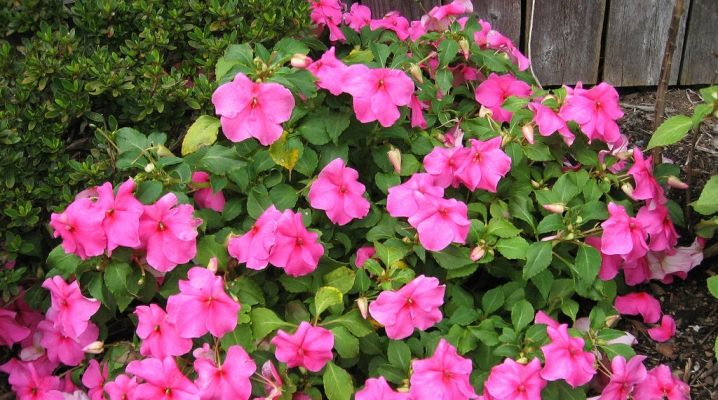
Garden balsam is a concept, perhaps not very well-known, but even domestic gardeners of the older generation will surely understand what it is about, if we mention its second, somewhat unusual name - "Vanka wet". For at least a century, this plant has been an integral attribute of full-fledged gardens, small flower beds or even window sills, and it is somehow wrong for a lover of home botany not to know about it.

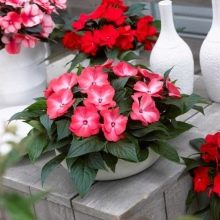
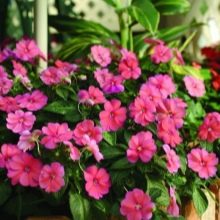
Description
Garden balsam is a shrub with a height of 25-50 cm. In ornamental gardening, it found itself thanks to its beautiful flowers, which, even in the wild, are distinguished by a variety of shades: from pink to purple. In recent decades, breeders have been working intensively with the flower, so that it can have almost any tone, except for yellow and blue.

Unlike many other modern garden plants, balsam is a guest not so far away that it was necessary to create conditions suitable for him on purpose. In the middle lane and to the south, it is often grown as a street plant, and begins to bloom around the end of May, delighting the owners with bright flowers until the first frost. If you want, you can grow it in pots indoors - then flowering can come earlier and last longer.
Due to its adaptability to our conditions, such a flower is considered quite simple to grow and care for.
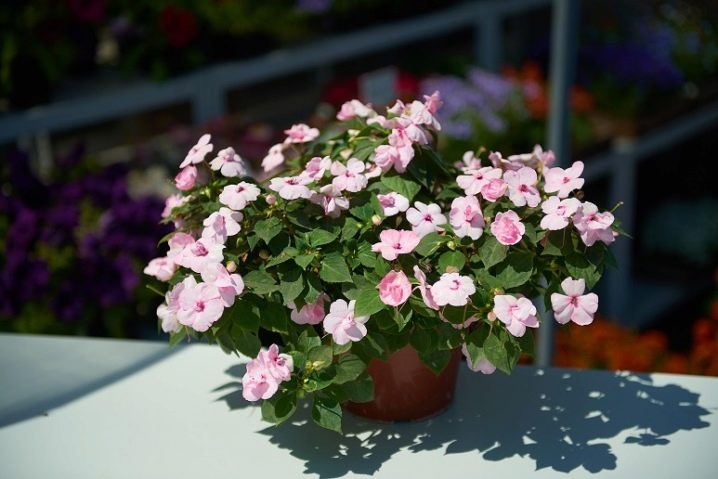
Because of its almost year-round flowering, this beautiful plant early fell in love with European ladies, among whom it gained fame as the most popular indoor plant five hundred years ago - due to its ubiquity, it could be seen even on poor windowsills.
The fashion for balsam did not reach Russia too quickly, but there is evidence according to which domestic window sills were decorated with such flowers as early as the century before last. In the 20th century, intensive breeding work made it possible to develop varieties for the street (even for regions with a harsh climate), as well as greatly diversify plant variants, which made it even more popular.
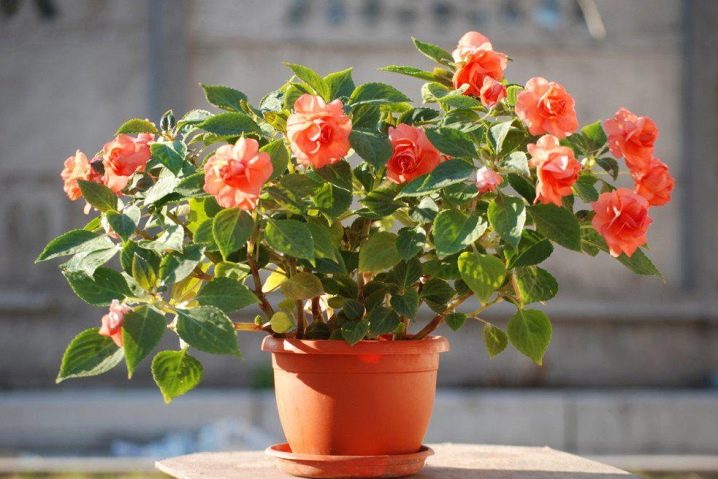
The bush got its second name "Vanka wet" due to the fact that small droplets of moisture are constantly formed on its foliage of a characteristic elongated shape. Interestingly, not only our people, but also the British practiced alternative names. There, the balsam is also called "Zealous Lisa" because it stops blooming only for a short, coldest period of the year.
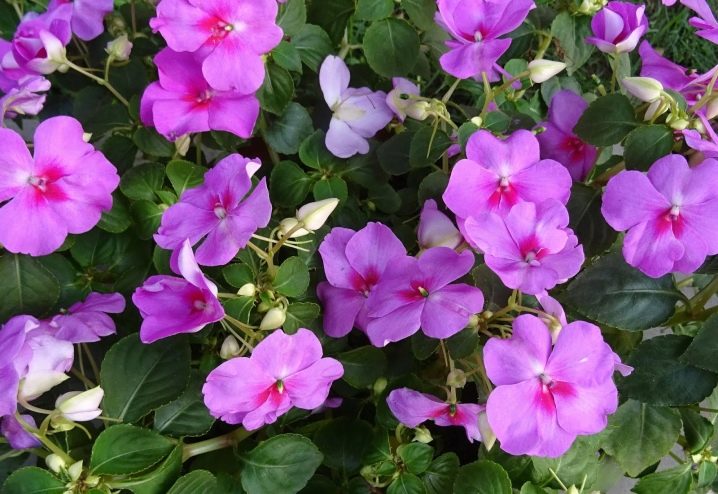
Types and varieties
There are dozens of various types and varieties of balsam today, because Southeast Asia is considered its original homeland, as well as other tropical regions of the planet, after which it successfully took root in Europe and North America, where they intensively worked on it in order to develop new species.
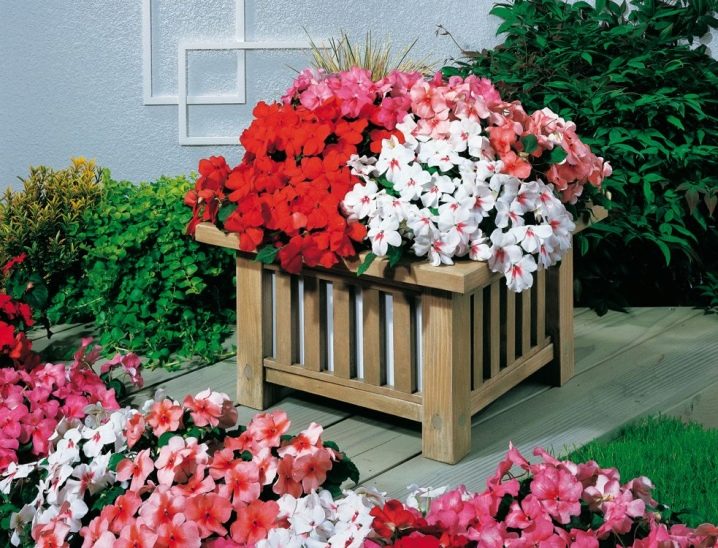
The original New Guinea garden balsam cannot survive our winter on the street, therefore it is an annual plant. A striking example of how people made changes to the natural design is a special room balsam, allocated by many specialists, which is afraid of temperatures below +6 degrees, but under normal room conditions it turns out to be long-term.
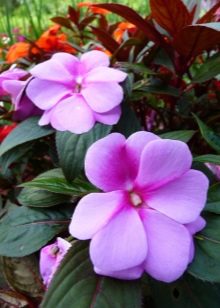
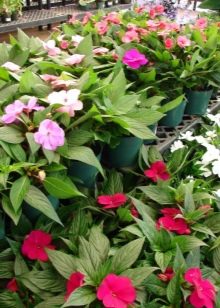
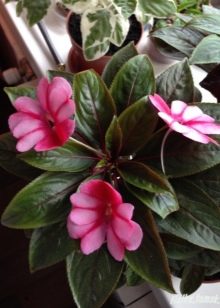
To begin with, it's worth talking about the most famous species and their features.
- Hawker's Balsam originally grown in New Guinea, it is distinguished by beautiful purple flowers, the middle of which is almost white. Leaves of this type are elliptical and are marked with beige veins.
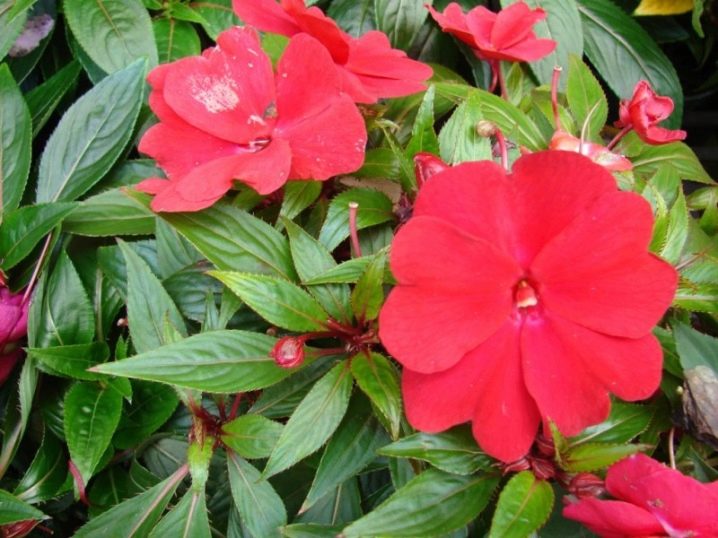
- Large-flowered balsam comes from Sri Lanka, its stems and leaves are fleshy, pronounced green. This species is revered by gardeners for large flowers, but the color can be from white to bright red.
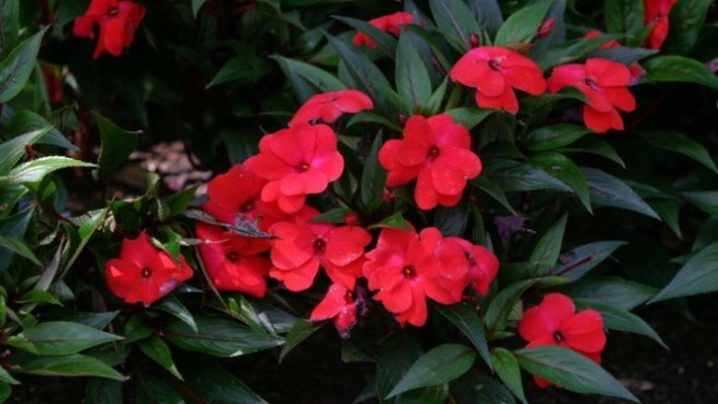
- Balsam creeping - one of the shortest varieties, its stems are distinguished by a somewhat unusual reddish-brown tint, while the flowers stand out with a characteristic golden tone. In our gardens, this is still a rarity.
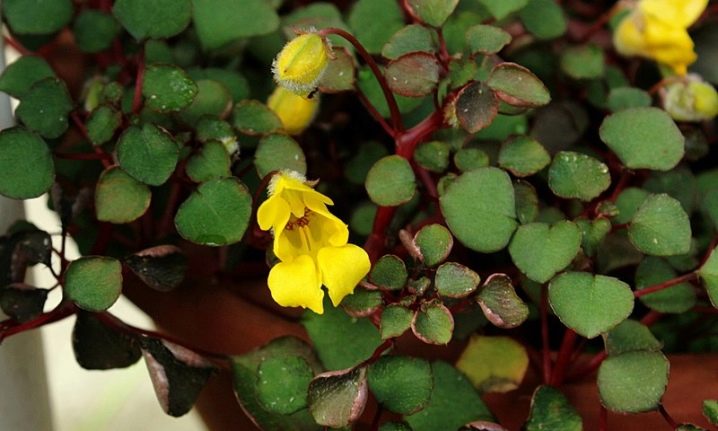
- "Touchy Waller" Is an African plant variety with many varieties, including Arabesque, Supernova and Pink Star... Numerous varieties have their own descriptions in each case, so it can be difficult for a non-specialist to understand that they are one and the same species. It was Waller's Touchy Meat that became the basis for most of the modern hybrid varieties that have spread throughout the world.
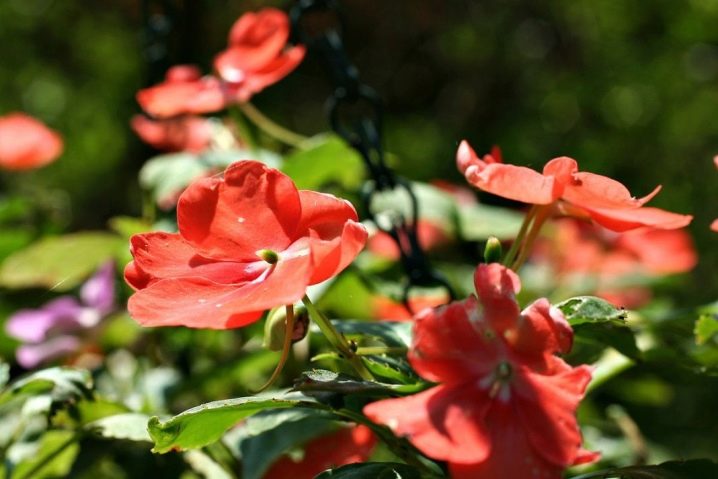
- "Balsamic touch-up" Is another very famous species that came to us from Bengal. In our country, it is probably used exclusively for decorative purposes, but at home it is also grown in the garden, since beautiful inflorescences are edible and can give a "zest" to the salad.
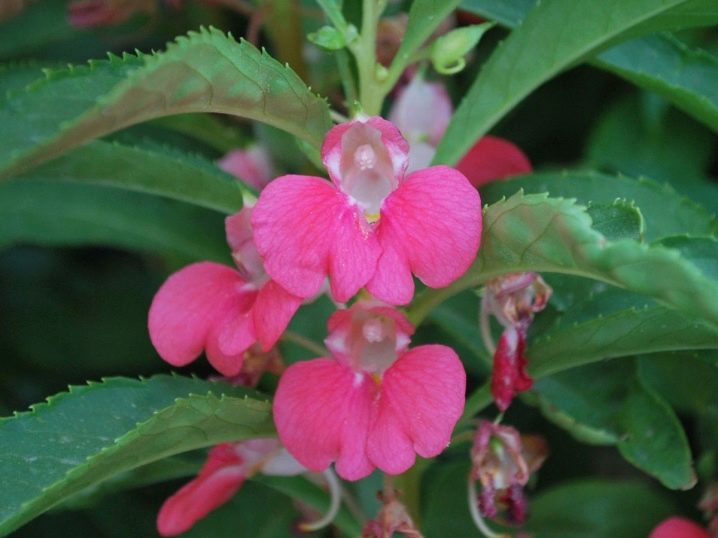
In our area, even in the wild, you can also find forest balsam, but, from the point of view of gardeners, it is hardly too attractive: with a significant growth up to a meter in height, the plant blooms with relatively inexpressive pale yellow small flowers. Among other things, this species is also poisonous.
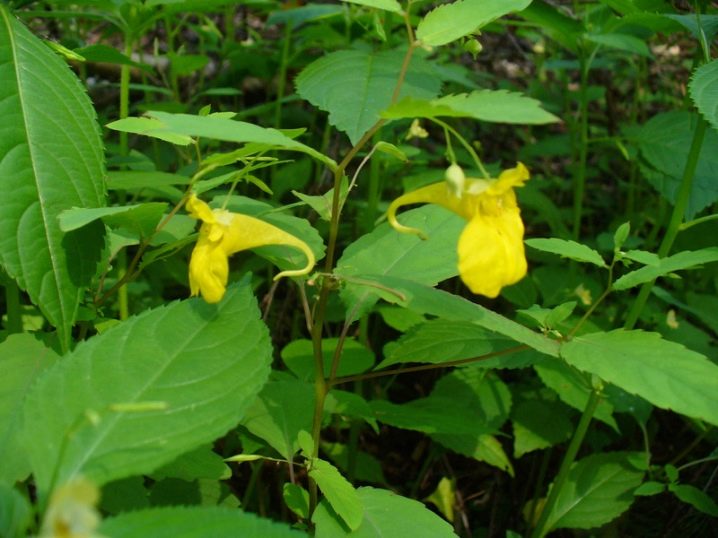
If we talk about specific varieties that are very popular, then first of all it should be highlighted "Camellia"... The variety got its name for a reason, because its flowers really resemble a real camellia, and the range of shades is very wide: from white to purple. Among other popular varieties, it is necessary to mention also "Carmelita", "Fashionista" and "Tom Tamb".
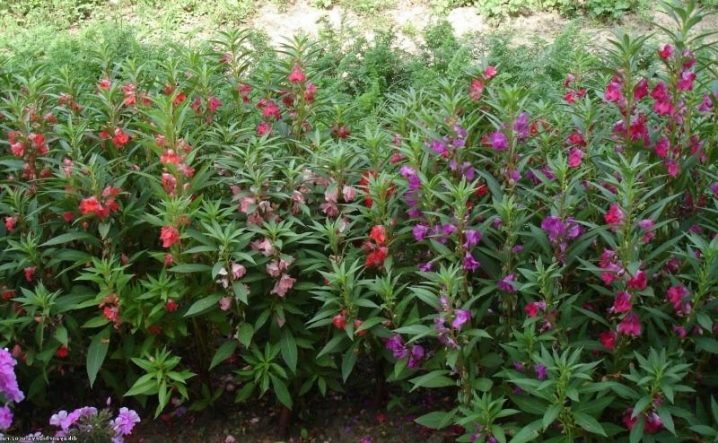
Disembarkation rules
Since we are talking specifically about the garden variety of balsam, we will focus on how to plant it in the open field. The whole growing procedure is quite simple, you just need to understand once the requirements put forward by this plant for normal growth, and try not to violate them.
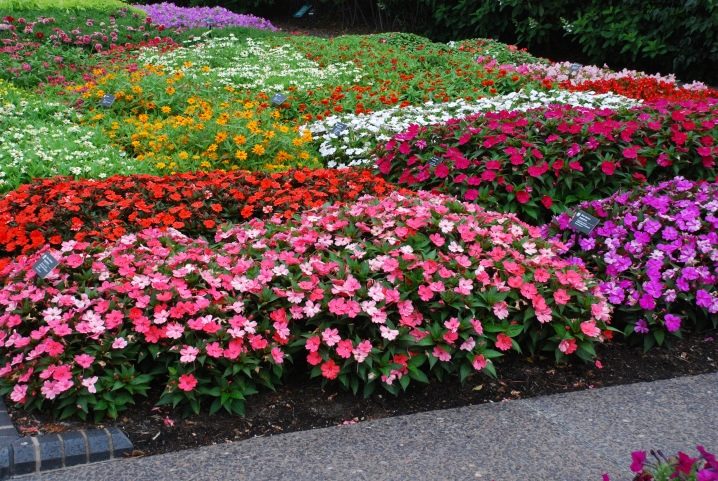
First of all, you need to choose the right site. The bush loves bright, but diffused light, therefore, when choosing a place for it, you need to focus on the western or eastern corner of the site. If you have chosen the right place, there will be no problems with flowering. For comparison: in a heavily shaded place, the balsam will suddenly stretch up strongly, but there will be less strength for flowering, because the number of flowers will be halved. It is also better not to plant the plant in the open sun. If you have no choice, find a way to shade the bush in the middle of the day.
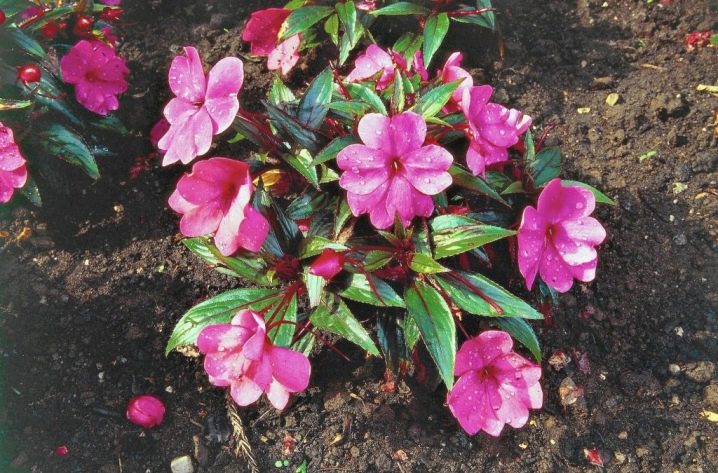
In terms of choosing neighbors, garden balsam is picky, but for decorative purposes it is usually planted in the immediate vicinity of fuchsia, ageratum, verbena or begonias.
As a rule, it is customary to plant already somewhat grown seedlings in open ground, which are planted in advance, because moving to the street can be performed almost immediately after the last frost. At the same time, a sharp change in conditions from indoor to outdoor seedlings will not work, therefore they are gradually taught to new conditions, exposing the pots to the open air for several hours a day before planting.

Balsams are not planted one by one, but they should not grow very densely either. If the distance between the pits is less than 30 cm, individual bushes will interfere with each other. In general, an average garden soil for growing such a plant is quite suitable, but if you doubt its nutritional value, it is better to immediately add a little humus, peat and sand to the hole.

The transplant looks very simple: you need to remove the seedlings from the vessel and place them in a hole, then cover them with garden soil or the mixture described above. In order for the bush to take root normally, it is immediately watered and the soil around the stem is immediately covered with mulch for insulation. If you suspect that the bush will stretch up and lose all its strength on this, leaving nothing for flowering, you can pinch the top right away.

Care activities
The big advantage of this plant is that it tolerates our climate normally, so caring for it is not particularly difficult. On the other hand, balsam cannot be classified as a typical weed that will grow even without the help of people, so you will have to work to get bright and attractive colors.

First of all, you should understand the watering regime. Garden balsam loves water, therefore it is often watered, but you need to remember that this plant is not a marsh plant, in this regard, it is important not to overdo it. It is better to water balsam often and little by little, rather than occasionally, but abundantly. In general, you just need to make sure that the top layer of the soil always remains moist, but do not forget that a young, rapidly growing plant requires more moisture, therefore watering is more frequent. On hot days, more water is also needed, but it makes sense to increase not so much the frequency as the amount of water at a time.
In the midst of the summer heat, to maintain a normal amount of moisture in the plant body, it should also be sprayed.
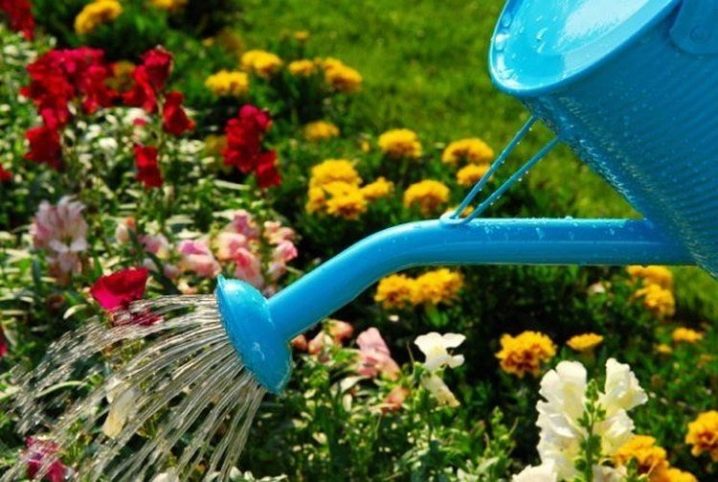
If watering is still insufficient, you will notice it pretty quickly: the bush will react by folding the foliage into a tube, then they will lose their original color, wither and fall off. If you ignore these obvious signs of overdrying, then the plant will die altogether, but with a quick reaction, the problem can be corrected by establishing the correct watering regime.
Please note that you can water the bush only in the evening, after sunset, otherwise direct sunlight, refracted in droplets of moisture, can burn the plant and evaporate moisture faster than the balsam has time to get drunk.
With a high plant demand for water, the soil should not be allowed to overflow and the moisture to stagnate. So, if it rained during the day, then balsams are often not watered at all. Regular loosening of the soil around the stem is also of great importance to prevent waterlogging. This procedure not only contributes to a more efficient drying of the soil without waterlogging, but also allows you to establish normal oxygen supply for the root system of the bush.
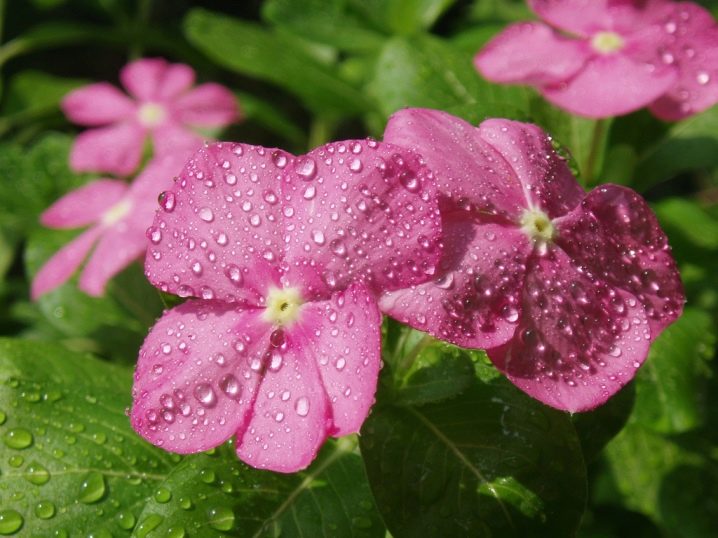
What garden balsam is in dire need of fertilizers. Lush flowering takes a huge amount of energy from the plant, and in fact they grow a bush for this very purpose, therefore, be prepared to apply potash and nitrogen fertilizers to the soil every two weeks. Alternatively, you can also use a complex fertilizer for flowering plants.
Please note that even wilted flowers still pull some of the nutrients for themselves, therefore, for a constantly fresh and abundant flowering, old inflorescences must be constantly cut off.

If your garden balsam still lives indoors and is ready to winter, please note that in winter (around January, the exact duration - depending on the climate of the region and the conditions in the building), it will not bloom and will briefly fall into a kind of semblance hibernation. Since the main life processes slow down during this period, it makes sense to reduce both watering and fertilization., because the main resources, we recall, are spent precisely on abundant flowering.
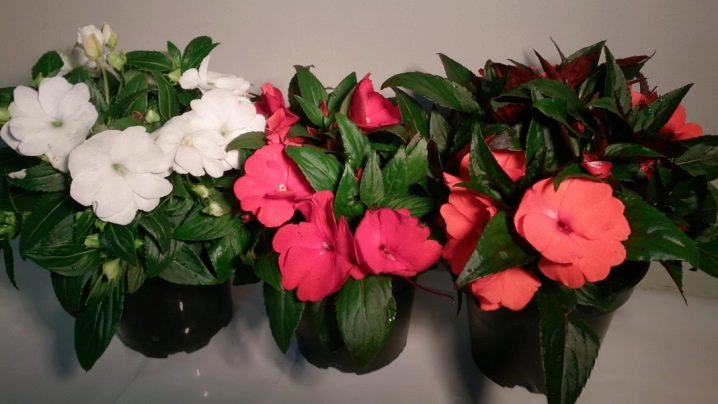
Reproduction methods
"Vanka wet" reproduces at home in two main ways: seeds and cuttings.
If you chose the first option, then, of course, you can buy seeds in the store, but it would be more logical to use the resource given by old plants. The collection of seeds is carried out approximately in August, they are formed in green boxes. It is advised to choose unripe boxes, since overripe ones from a light touch can burst, and the material will be lost. Indoors, the box will ripen if you store it in a dry room. After that, remove the seeds from it and store at temperatures from 0 to 10 degrees until next spring. The best packaging for this would be cardboard boxes or paper bags.
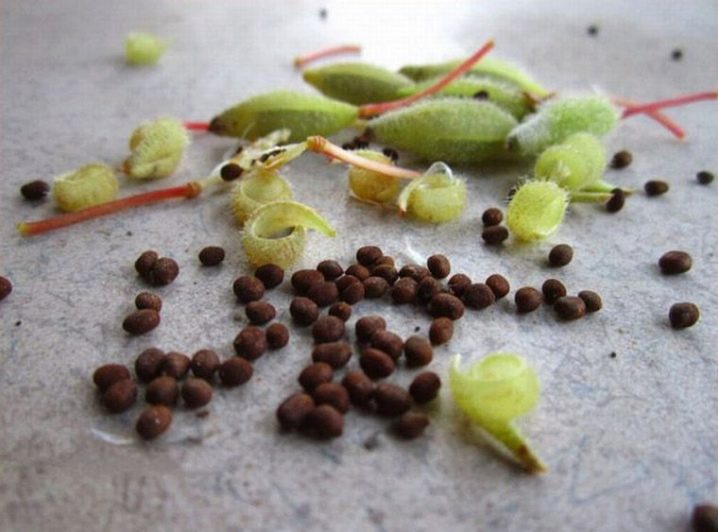
The advantage of growing from seeds is that the grown bushes will begin to bloom earlier. You should start with seedlings - for this, already in February or early March, the collected seeds are planted in small pots filled with a loose mixture of the same amount of coarse sand, peat and simple garden soil. The seeds are not even dripped in, because they need light for germination - they are simply watered with a small amount of warm water, the distance between them should be 3-4 cm.
Next, typical greenhouse conditions are created: the dishes are sent to a warm place and tightly covered with glass or polyethylene. In combination with daily short airing, this will give good germination.
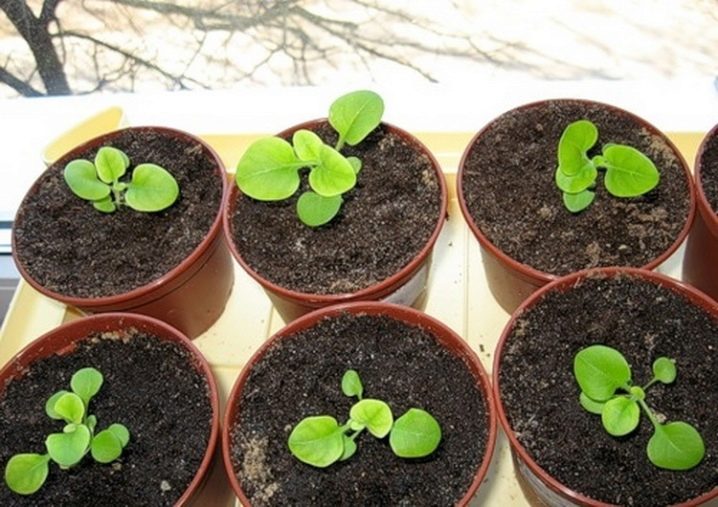
Upon the appearance of sprouts, seedlings must be provided with an abundant amount of light and regular watering. When the sprouts acquire the first 2-3 leaves, it is time to plant them in individual vessels. The dive is carried out very carefully so as not to damage the fragile plant. 5-7 leaves on each sprout is an indicator that the plants can already be pinched to grow in width, and after the last frost, the young bush can be planted in open ground according to the scheme described in the section on planting.
If you are not in a hurry to get flowers, and you don’t want to tinker with seedlings, you can just plant seeds in open ground immediately after the frost stops.
The soil is mixed as described above, for the sake of insulation, do not be too lazy to cover the soil with acrylic or polyethylene. If done correctly, the first results will appear in about a week.

Propagation by cuttings looks even easier, its main plus is that the procedure can be performed regardless of the season. A cutting should be considered a healthy twig about 5 cm long, which has at least 3-5 of its own leaves. Such a twig is separated from the mother plant, the leaves are removed in the lower part (remember, 3-5 should still remain) and placed in a container of water somewhere in a shaded place.
After one or one and a half weeks, the cutting should take root, then you can plant it even in a pot, even in open ground. Caring for a planted sprout requires the same conditions that an adult plant needs: bright lighting, regulated watering and warmth.
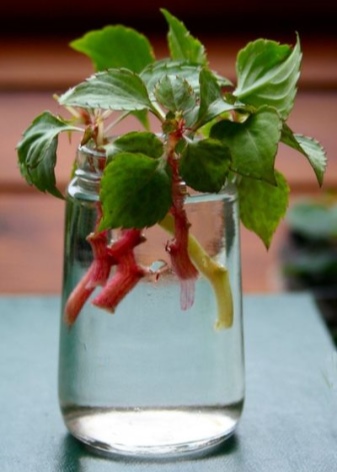
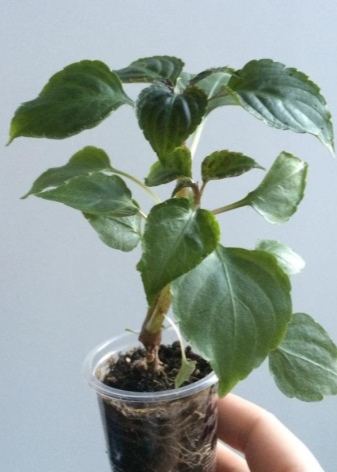
Diseases and pests
Like most species of living organisms on earth, garden balsam has natural enemies and diseases. In many cases, however, problems with the plant can be caused by improper care, therefore, first of all, check this very moment - suddenly you yourself are to blame for what is happening.
If the care regimen is recognized as correct and balanced, and there are no pests to be seen, it is possible that the bush is sick. He can get sick with the following ailments:
- viral mosaic gives the leaves a wavy shape, yellowish areas are formed on them;
- bronze characterized by slow growth of the plant as a whole, the leaves are deformed, wrinkle and fall off;
- ring mosaic leads to cracking of the leaves, as well as to the appearance of spots on them.
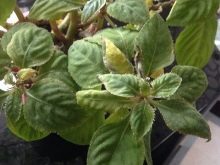

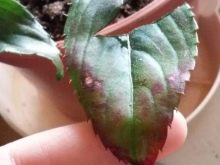
The problem as a result of all these fungal diseases is the same (the leaves are affected), therefore normal photosynthesis becomes impossible and the bush dies. However, with a quick response, all these terrible things can be cured by spraying with fungicides.
Growing on the street, garden balsams are completely defenseless against the invasion of insects. A particular danger is posed by spider mites, the presence of which can be determined even by the cobweb that he leaves. This enemy feeds on the sap of the bush, because of which the latter simply dries up. Aphids and thrips they do not just drink juice, but also gnaw on leaves, which, again, reduces the plant's ability to photosynthesize. In both cases, you should arm yourself with insecticides, which are sold in any gardening store.
At the same time, it is advisable to understand what kind of enemy was the cause of the decline of balsam. This will help you choose a more effective protection against it.
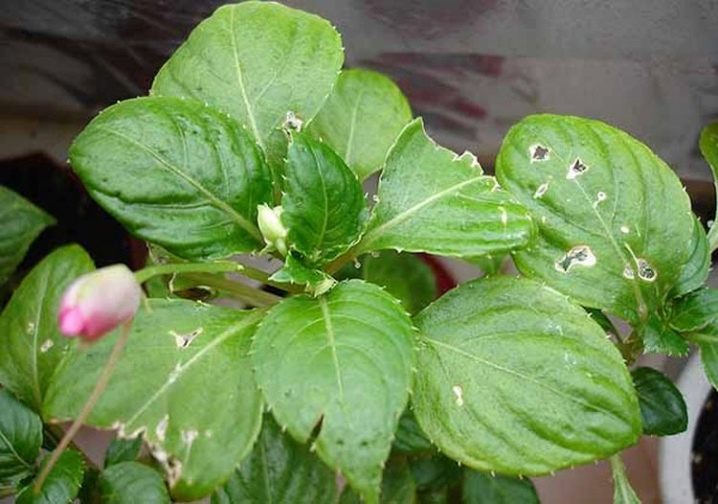
Application in landscape design
Decorating both gardens and rooms with blooming balsam is a win-win option that is widely used by modern lovers of green decorations.

For example, on a flower bed, these plants look especially beautiful in the company of their own kind. Considering the huge variety of possible shades of these colors, you can play with the palette and please the eye with a combination of such similar but multi-colored inflorescences. You can see how it looks like in the photo below.
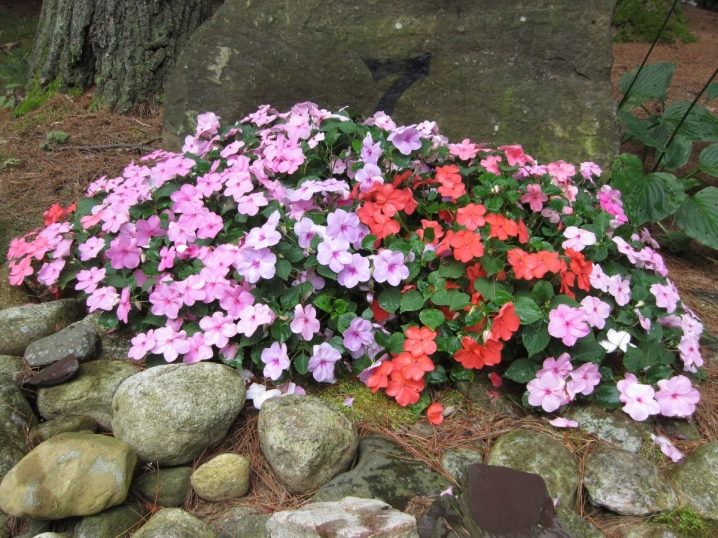
If you like traditional Mediterranean balconies, densely overgrown with flowers, then it is balsams that can help in imitating this in our environment. The architecture, of course, is not so easy to remake, but you must admit that the mood from such an addition clearly improves.
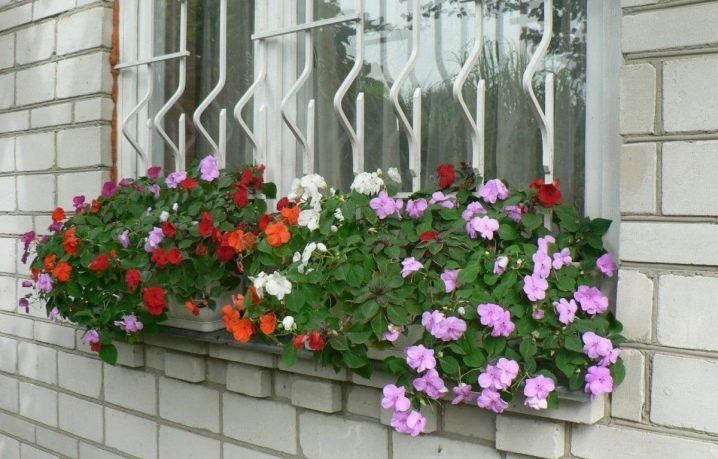
Considering that the balsam bush is small and light, this is a good choice for pots, thanks to which you can make a good vertical installation from single vessels. A romantic mood thanks to this decoration is guaranteed.
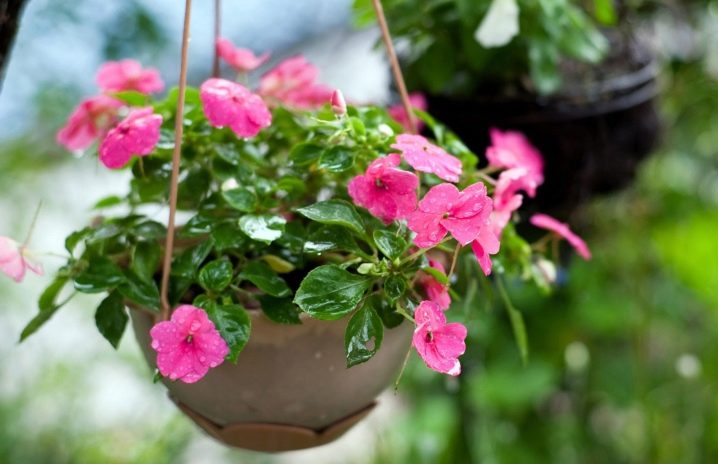
How to grow garden balsam is described in the video.































The comment was sent successfully.